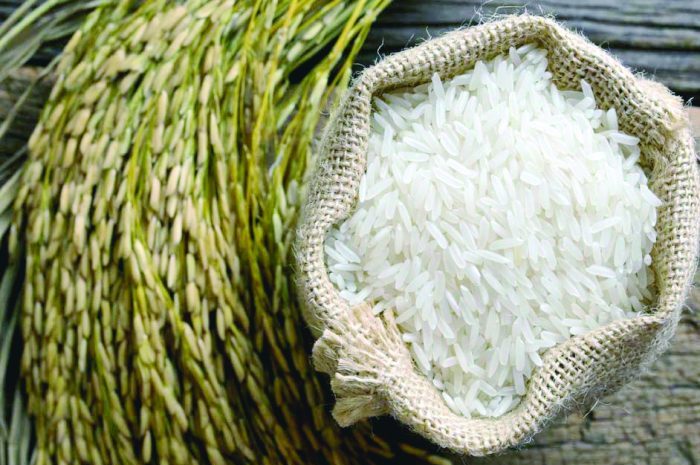As diabetes continues to be a prevalent health concern worldwide, individuals are increasingly seeking dietary strategies to manage their blood sugar levels effectively. Among these strategies, the selection of appropriate grains, particularly wheat, plays a crucial role. This article aims to provide a thorough exploration of the best wheat options for individuals with diabetes, covering topics such as whole grains versus refined grains, glycemic index (GI) and glycemic load (GL), nutritional information, types of wheat suitable for diabetes, practical tips for incorporation into the diet, research findings, recipes, and health warnings.
Explanation of Whole Grains vs. Refined Grains
Whole grains and refined grains undergo different processing methods, resulting in distinct nutritional profiles and impacts on blood sugar levels. Whole grains, such as whole wheat, contain all parts of the grain kernel: the bran, germ, and endosperm. These components contribute essential nutrients, including fiber, vitamins, and minerals. In contrast, refined grains, such as white flour, undergo processing that removes the bran and germ, stripping away valuable nutrients and fiber.
The fiber content in whole grains is particularly beneficial for individuals with diabetes. Fiber slows down digestion and the absorption of carbohydrates, leading to a more gradual increase in blood sugar levels after meals. Therefore, choosing whole grains over refined grains can help stabilize blood sugar levels and reduce the risk of insulin spikes.
Glycemic Index (GI) and Glycemic Load (GL)
The glycemic index (GI) is a scale that ranks carbohydrate-containing foods based on their effect on blood sugar levels. Foods with a high GI cause a rapid spike in blood sugar, while those with a low GI result in a slower, more gradual increase. The glycemic load (GL) takes into account both the GI of a food and the amount of carbohydrate consumed, providing a more accurate measure of its impact on blood sugar.
Different wheat products have varying GI and GL values. Whole wheat products generally have a lower GI and GL compared to their refined counterparts. For example, whole wheat bread typically has a lower GI than white bread, making it a better choice for individuals with diabetes. However, it’s essential to consider portion sizes and overall carbohydrate intake when assessing the impact of wheat products on blood sugar levels.
Nutritional Information
Various types of wheat offer distinct nutritional benefits for individuals with diabetes. Here is a comparison of the nutritional profiles of some common types of wheat:
Whole Wheat: Rich in fiber, vitamins, and minerals, whole wheat provides sustained energy and promotes digestive health. It contains complex carbohydrates that are digested more slowly, helping to maintain stable blood sugar levels.
Khapli (Emmer Wheat): Khapli wheat is an ancient grain known for its nutty flavor and nutritional density. It is high in fiber, protein, and antioxidants, making it a suitable choice for diabetes management.
Spelt Wheat: Spelt wheat is an ancient grain similar to wheat but with a slightly different nutritional composition. It contains gluten but is often tolerated better by individuals with gluten sensitivities. Spelt wheat offers a good source of fiber, protein, and essential nutrients.
Durum Wheat: Durum wheat is commonly used in pasta production and is known for its high protein content. While it has a moderate GI, consuming durum wheat products in moderation can be part of a balanced diabetic diet.
Bansi Wheat: Bansi wheat, also known as Indian wheat or desi wheat, is a traditional variety grown in India. It is rich in fiber and antioxidants, offering potential benefits for blood sugar control and overall health.
Red Wheat: Red wheat varieties, such as hard red wheat, are known for their robust flavor and nutritional value. They contain higher levels of fiber and antioxidants compared to refined wheat products.
Incorporating a variety of these wheat types into the diet can provide a range of nutrients and health benefits for individuals with diabetes.
Types of Wheat Suitable for Diabetes
Based on their nutritional profiles and impact on blood sugar levels, certain types of wheat are considered better suited for diabetes management. These include:
Whole Wheat: Opt for whole wheat products such as whole wheat bread, whole wheat pasta, and whole wheat flour to benefit from their fiber content and lower GI.
Khapli (Emmer Wheat): Khapli wheat is gaining popularity among health-conscious consumers for its nutritional richness and potential health benefits, including blood sugar control.
Spelt Wheat: Spelt wheat offers a unique flavor profile and nutritional composition, making it a versatile choice for individuals with diabetes looking to diversify their grain intake.
Durum Wheat: While durum wheat products should be consumed in moderation due to their moderate GI, choosing whole grain options can still contribute to a balanced diabetic diet.
Bansi Wheat: Bansi wheat, particularly when consumed in its whole form, provides valuable nutrients and may help support blood sugar management when incorporated into meals.
Red Wheat: Red wheat varieties offer a heartier texture and more robust flavor compared to refined wheat products, making them a satisfying addition to a diabetic-friendly diet.
Practical Tips
Incorporating these whole grains into a diabetic diet can be easy and delicious with the following practical tips:
Choose whole wheat bread or wraps for sandwiches and toast.
Substitute whole wheat pasta or brown rice for refined grains in pasta dishes and stir-fries.
Use whole wheat flour in baking recipes for muffins, pancakes, and bread.
Experiment with ancient grains like spelt or emmer wheat in salads and grain bowls.
Enjoy oatmeal or whole grain cereals for a nutritious breakfast option.
By making these simple swaps, individuals with diabetes can enjoy a balanced diet that supports blood sugar control and overall health.
Research and Studies
Recent research supports the inclusion of whole grains, including certain types of wheat, in diabetes management. A study published in the Journal of Nutrition and Metabolism found that incorporating whole grains into the diet was associated with improved glycemic control and reduced risk of type 2 diabetes. Another study in the European Journal of Clinical Nutrition demonstrated that consuming whole grains was linked to lower fasting insulin levels and improved insulin sensitivity.
Experts also emphasize the importance of whole grains in diabetes prevention and management. The American Diabetes Association recommends choosing whole grains over refined grains and increasing fiber intake to improve glycemic control and reduce the risk of complications associated with diabetes.
Recipes and Preparation
To inspire healthy and delicious meals featuring whole grains, here are two recipes that showcase the versatility of wheat in diabetic-friendly cooking:
Whole Wheat Veggie Pizza
Ingredients:
Whole wheat pizza dough
Tomato sauce
Assorted vegetables (bell peppers, onions, mushrooms, spinach)
Mozzarella cheese (part-skim)
Olive oil
Italian seasoning
Instructions:
Preheat the oven to 425°F (220°C).
Roll out the whole wheat pizza dough on a baking sheet.
Spread tomato sauce evenly over the dough, leaving a small border around the edges.
Top with chopped vegetables and sprinkle with mozzarella cheese.
Drizzle olive oil over the pizza and sprinkle with Italian seasoning.
Bake for 15-20 minutes or until the crust is golden brown and the cheese is melted and bubbly.
Slice and serve hot.
Spelt Berry Salad
Ingredients:
Cooked spelt berries
Mixed greens (spinach, arugula, kale)
Cherry tomatoes, halved
Cucumber, diced
Red onion, thinly sliced
Feta cheese, crumbled
Balsamic vinaigrette dressing
Instructions:
In a large bowl, combine cooked spelt berries, mixed greens, cherry tomatoes, cucumber, red onion, and feta cheese.
Drizzle with balsamic vinaigrette dressing and toss gently to coat.
Serve chilled as a refreshing and nutritious salad option.
Health Warnings and Considerations
While wheat and whole grains offer many health benefits, individuals with diabetes should be mindful of portion sizes and overall carbohydrate intake. Consuming excessive amounts of any carbohydrate-containing food, including whole grains, can still lead to spikes in blood sugar levels.
Additionally, some individuals may have sensitivities or allergies to certain grains, such as wheat gluten. It’s essential to listen to your body and consult with a healthcare provider if you experience any adverse reactions after consuming wheat or wheat products.
Conclusion
In conclusion, selecting the right types of wheat, such as whole grains like whole wheat, khapli, spelt, and others, can play a significant role in diabetes management. By prioritizing whole grains over refined grains, monitoring portion sizes, and incorporating a variety of wheat types into meals, individuals with diabetes can enjoy a balanced diet that supports their overall health and well-being.

























